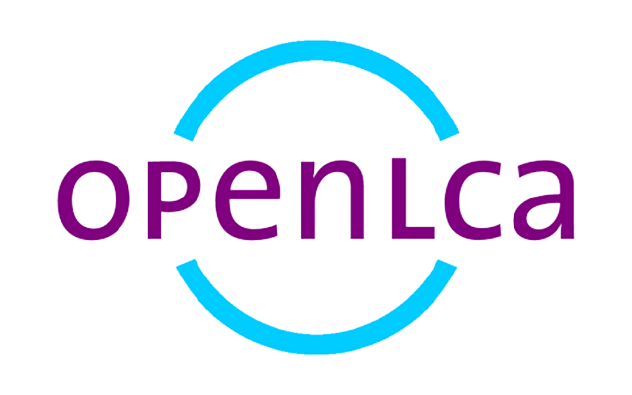The latest version of the ecoinvent database, version 3.9.1, released on 15th December 2022, includes major updates and 1000 new processes (datasets), 1800 updated datasets and 270 new products. The initial database version 3.9.0 was released on 13th October 2022 by ecoinvent and updated with important corrections to version 3.9.1. ecoinvent identified some issues in version 3.9.0, which affected parts of the published data and can potentially influence the LCIA scores of certain methods. For openLCA, the corrected version 3.9.1 is directly available and version 3.9.0 will not be used.
A few of the major updates and additions of ecoinvent version 3.9 compared to the previous version 3.8 are listed below[1]:
New and updated datasets
- Agriculture: The sector features updates introducing data on new crops produced in Canada and Brazil. Specifically, ecoinvent v3.9 includes data on the production of new crops from Canada, such as pinto bean, red kidney bean, fava bean, and navy bean. Further, it introduces data on the production of new products (peanut) and updates data on the production of major products from Brazil, including coffee, sugar cane, soybean, and maize. ecoinvent 3.9 also features new and updated data on pesticides, which may affect the results of assessments for agricultural processes and products.
- Batteries: ecoinvent v3.9 continues the improvement of the representation of batteries in the ecoinvent database. This year’s update includes new datasets on the ‘Lithium, Iron, and Phosphate’ battery technology, thus, expanding the coverage of battery chemistries now including 5 important technologies. Complementary, the datasets for battery separator and electrolyte were updated.
- Building & Construction: In ecoinvent v3.9, the sector is enhanced with new data for cement and concrete using recycled and waste mixed aggregates. Furthermore, new nomenclature rules have been introduced for the cement and concrete supply chains.
- Chemicals & Plastics: The Chemicals sector is updated to include 36 new chemical products developed for the EF initiative, mainly pesticides and plasticizers, including ethephon, triclopyr, and dioctyl adipate. Moreover, ecoinvent v3.9 takes the first step to gradually improve the representation of hydrogen in the ecoinvent database.
- Electricity: ecoinvent v3.9 updates the electricity market mixes to reflect the situation in 2019. In the case of the US, Canada, and Switzerland the electricity mixes are updated to reflect the situation in 2020. This year, the electricity mixes for China, India, and Brazil are also updated to reflect the situation in the countries in 2020, 2019, and 2020 respectively. ecoinvent v3.9 also updates the data on electricity transmission networks. For the countries where data is available, this update also introduces separate data for aerial, underground, and subsea cables. ecoinvent v3.9 further introduces residual mixes.
- Metals: This update expands the data coverage of the Metals sector with new and updated data. Specifically, ecoinvent v3.9 introduces data on new metal products, including antimony, borates, germanium, zirconium and hafnium.
- Pulp & Paper: The Pulp and Paper sector has been updated with new and updated on products used to produce packaging materials and paper, including data from industry associations.
- Oil & Gas: ecoinvent v3.9 introduces an extensive overhaul of the data on natural gas and crude petroleum oil supply. Specifically, this version includes an update on the natural gas and crude petroleum oil supply chains (production, long-distance transport, and regional distribution) in the ecoinvent database to reflect the global supply situation in 2019. In addition, the update introduces regional consumption mixes for crude petroleum oil to North America and Europe, alongside new or updated natural gas supply to 44 countries, based on the situation in 2019. The update integrates data on the flaring of natural gas from the Global Gas Flaring Reduction Partnership (GGFR) of the World Bank and on methane emissions from gas venting and fugitive emission source.
- Waste: ecoinvent v3.9 introduces the first part of the Waste sector overhaul. Specifically, this update disaggregates the wastewater treatment chains, allowing visibility of the by-products of waste-water treatment and its subsequent treatments.
Database-wide changes
- Emission Factors (LCIA Methods): ecoinvent v3.9 integrates IPCC 2021, updates the EF method by the European Platform on Life Cycle Assessment to v3.1, and implements the latest versions of Ecological Scarcity (2021), ReCiPe (2016), TRACI v2.1, EPS (2020). With ecoinvent v3.9, Crustal Scarcity Indicator (2020) is now offered to ecoinvent users for the first time.
- Product Information: With ecoinvent v3.9, the database-wide update and expansion of the information on products and services is now complete, including enhanced product characteristics.
- Nomenclature & Identifiers of Elementary Exchanges: Following ecoinvent’s participation in the GLAD project, ecoinvent v3.9 updates the nomenclature and identifiers of the complete list of elementary exchanges (environmental flows). Specifically, ecoinvent v3.9 updates names, CAS numbers, formulas, and synonyms of the exchanges. The result of this update is an improved list of elementary exchanges that is now more aligned with the respective lists of other databases.
Get ecoinvent 3.9.1 for openLCA
ecoinvent 3.9.1 is available for download for openLCA exclusively on https://nexus.openlca.org. Please note that versions of ecoinvent 3.9.1 obtained elsewhere will not be compatible with openLCA. The ecoinvent licence purchased via nexus.openLCA.org is downward compatible.
In addition, users with an ecoinvent 3.9.1 license will also receive access to older versions of ecoinvent. All the different data packs can be used as independent databases in openLCA or combined together, if necessary. However, special attention should be paid to integrating older versions of ecoinvent databases with ecoinvent version 3.9.1 database due to the modification of the UUID of some processes and flows.
Life Cycle Impact Assessment (LCIA) methods package by ecoinvent are available via openLCA Nexus too. With this package it is possible to reproduce the LCIA results provided by the ecoinvent Association. However, the use of the openLCA LCIA method package (currently, 2.2.0) is also possible and recommended by GreenDelta.
[1] Slightly modified from https://ecoinvent.org/wp-content/uploads/2022/10/Change-Report-v3.9.pdf (accessed 04.01.2023).
